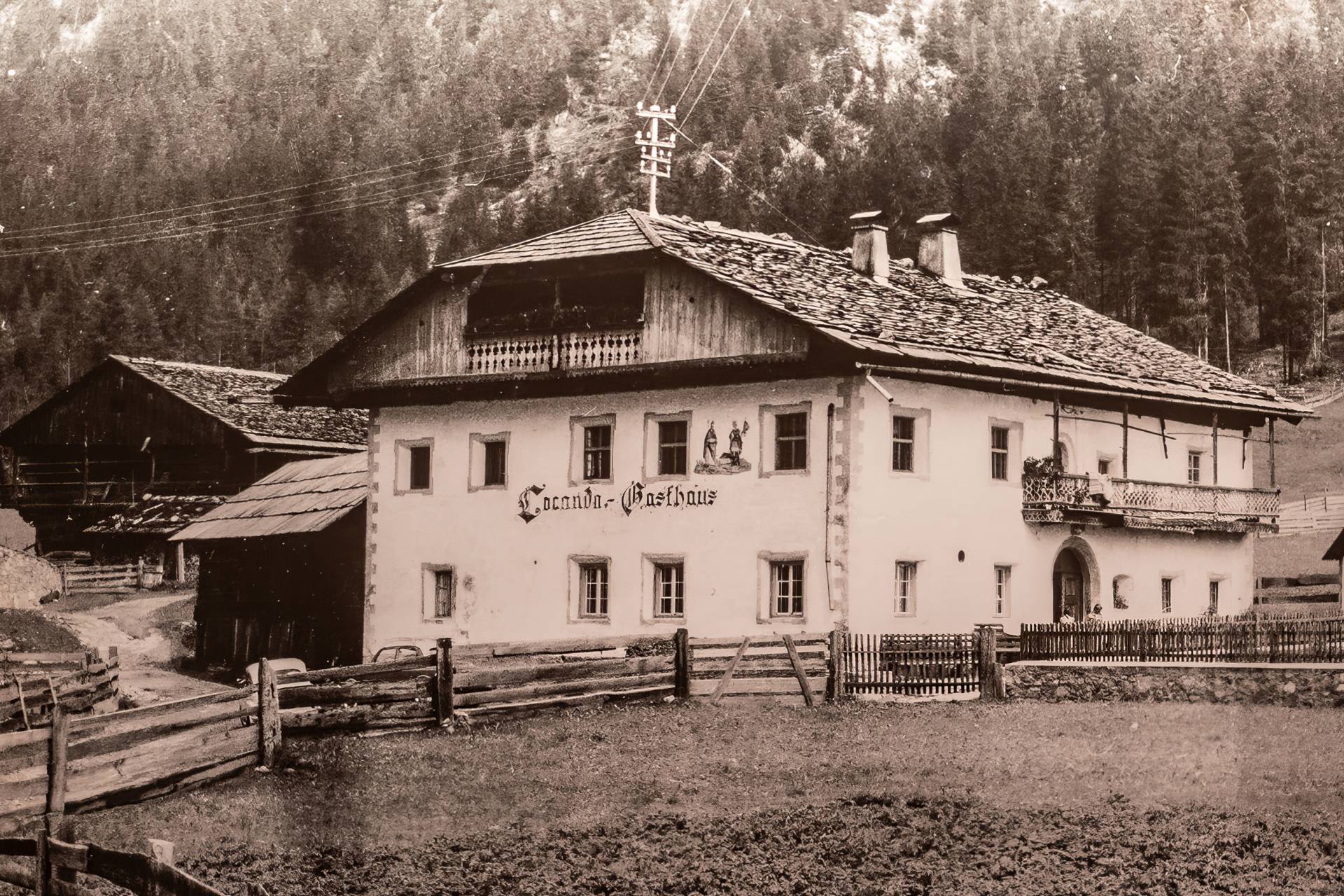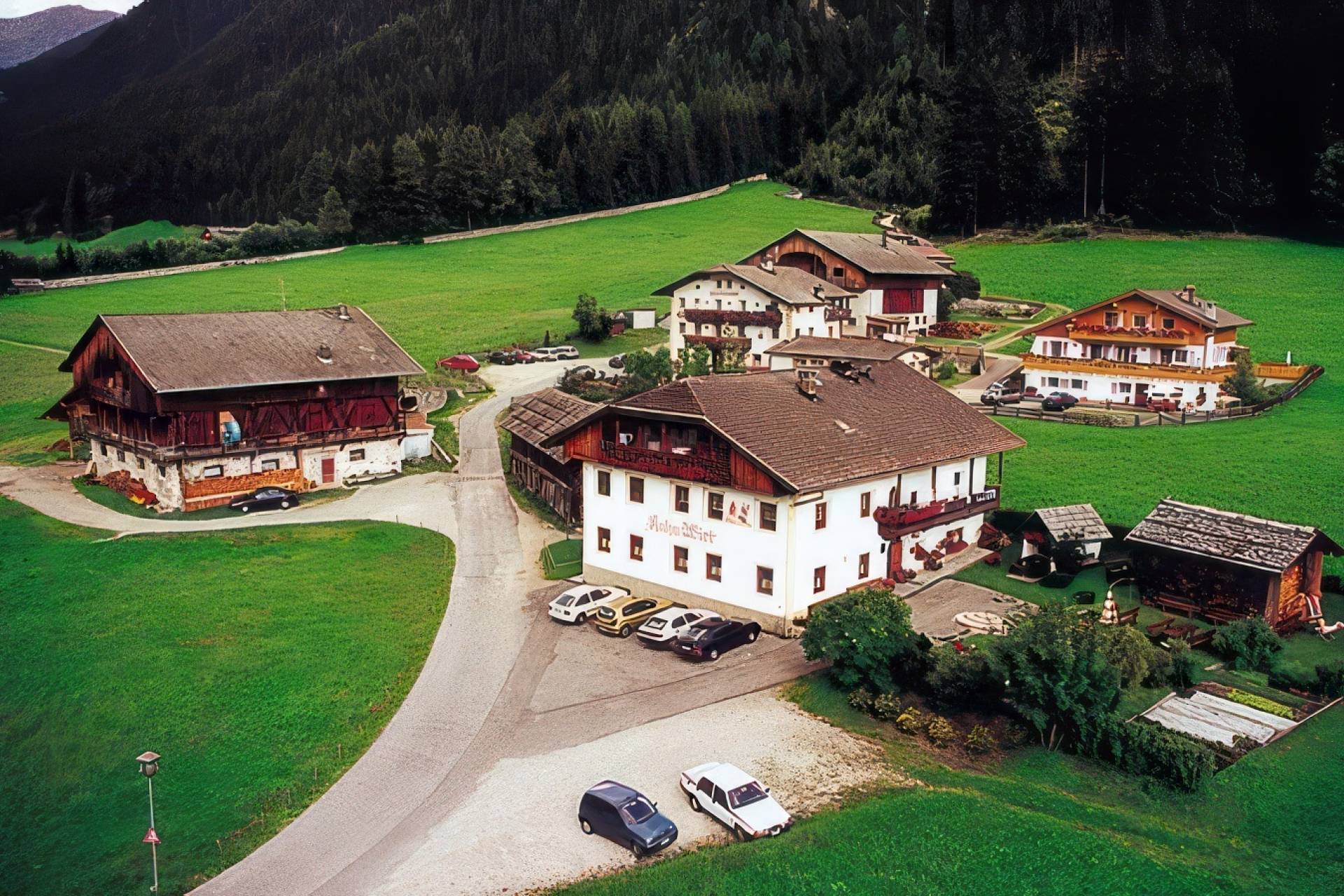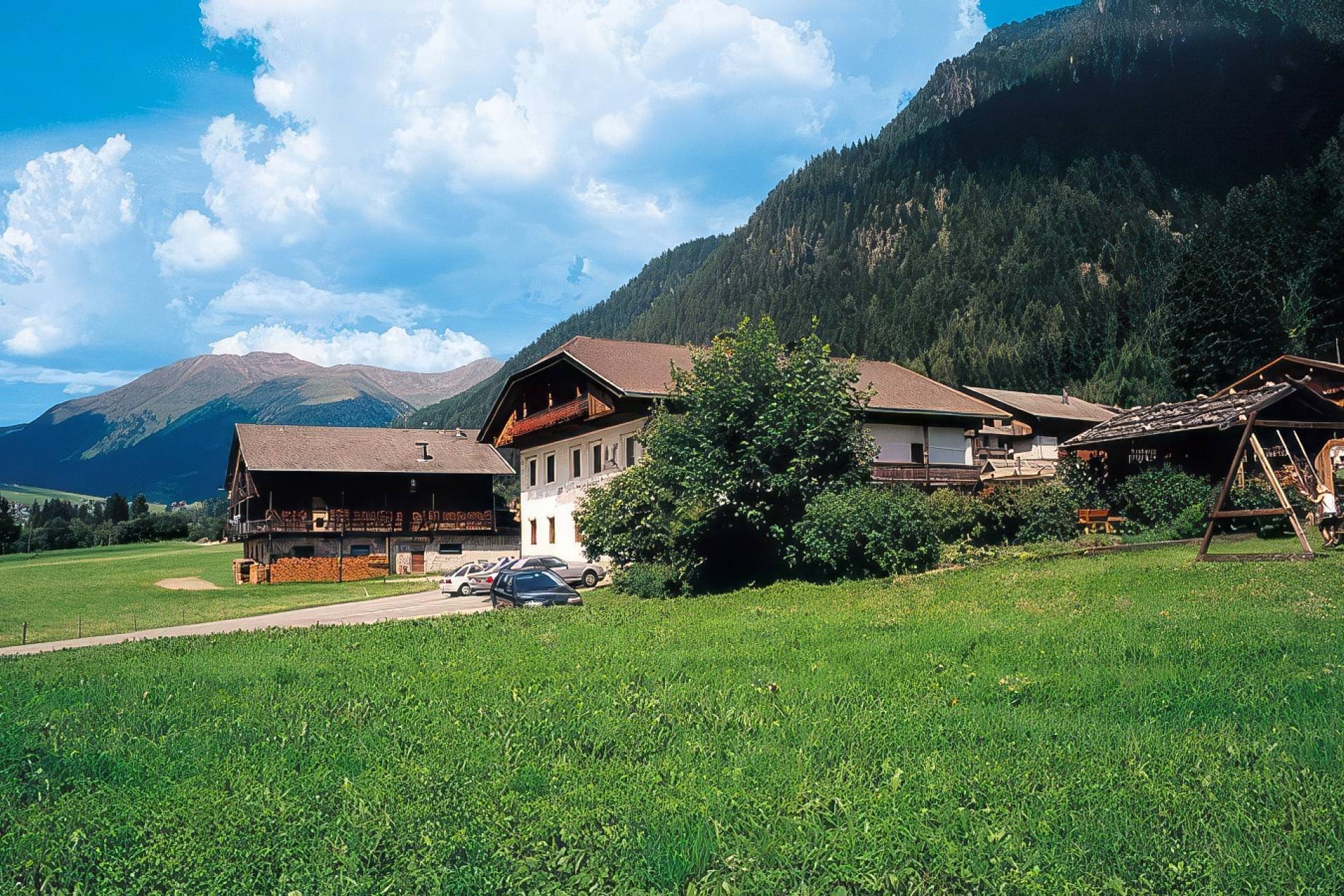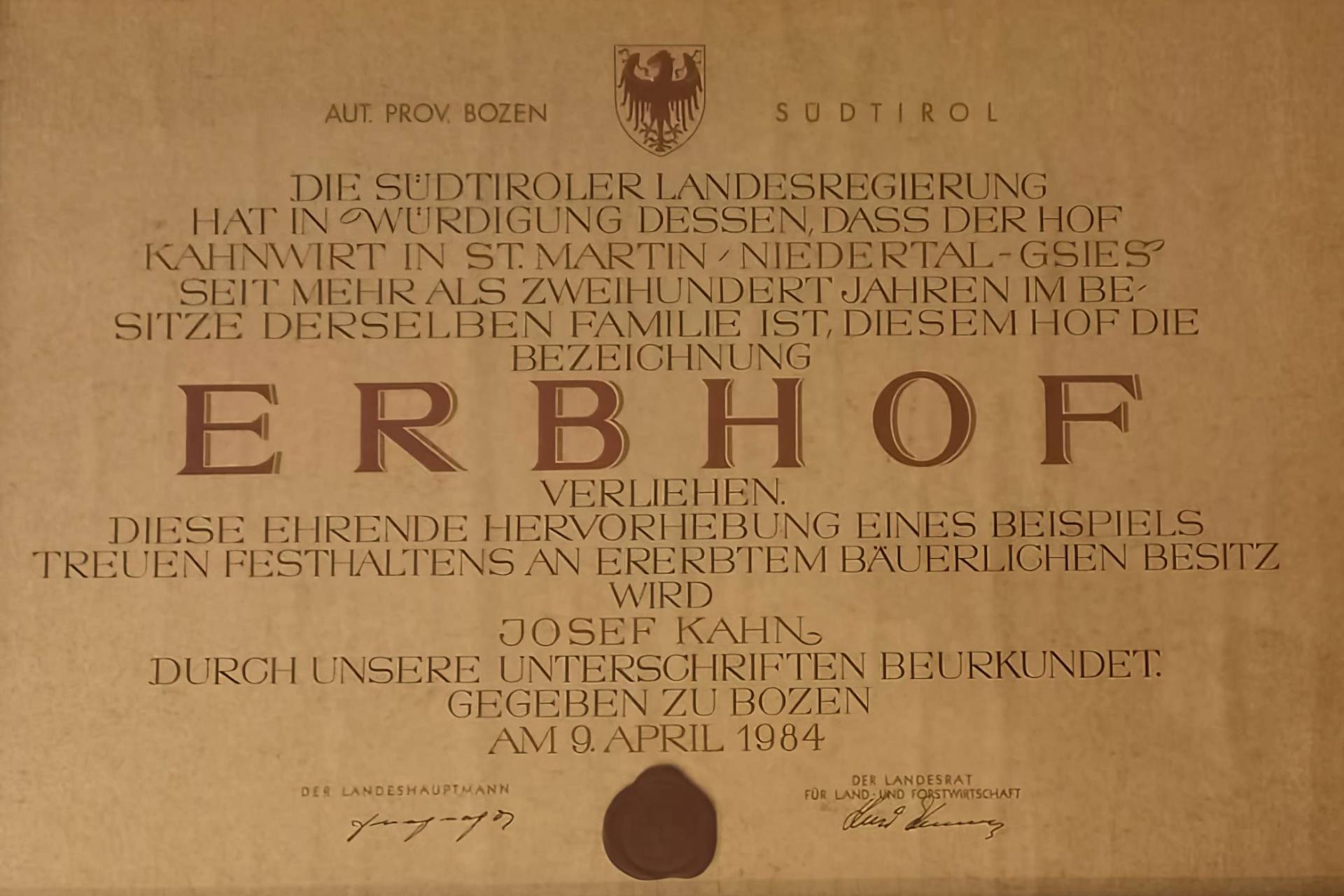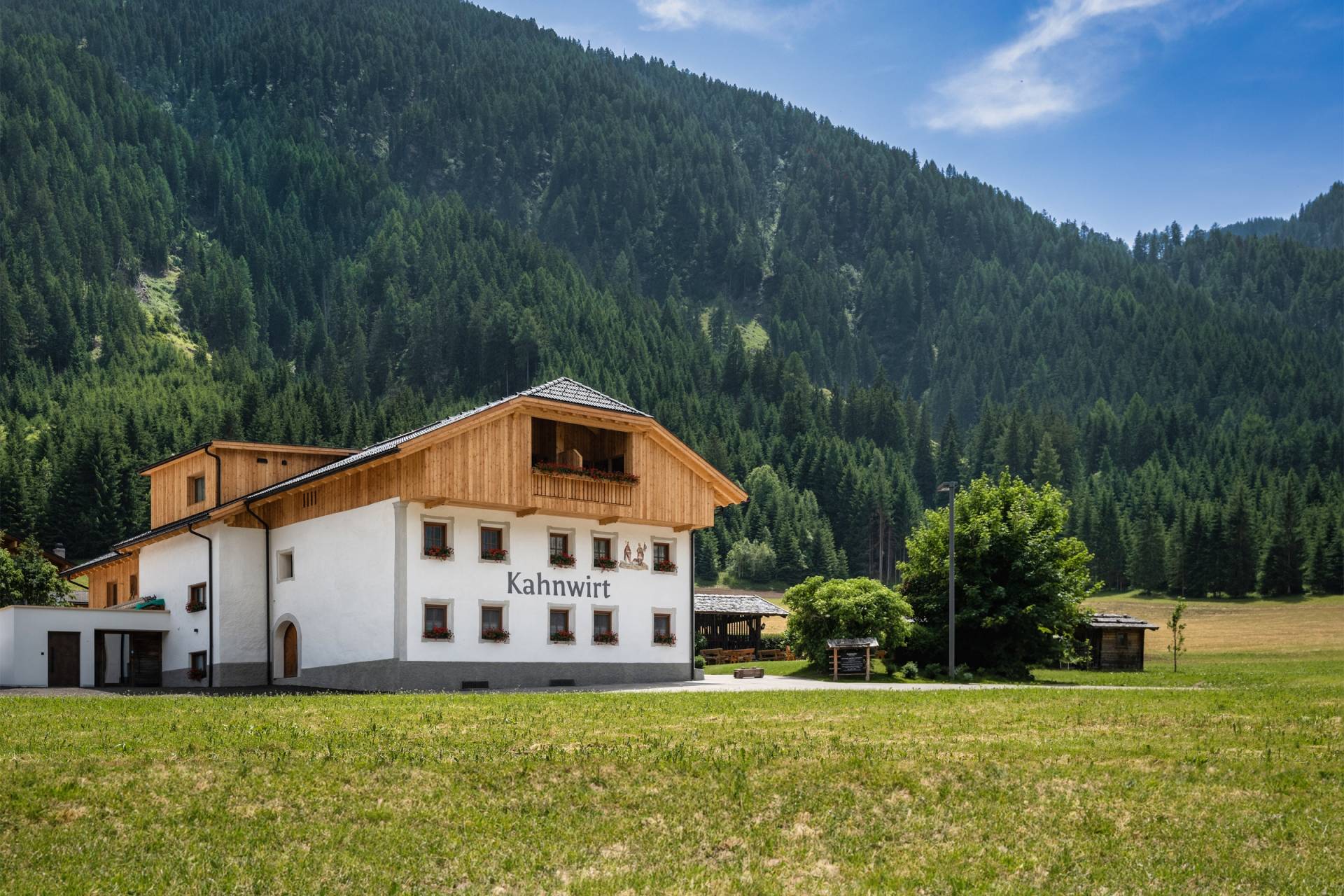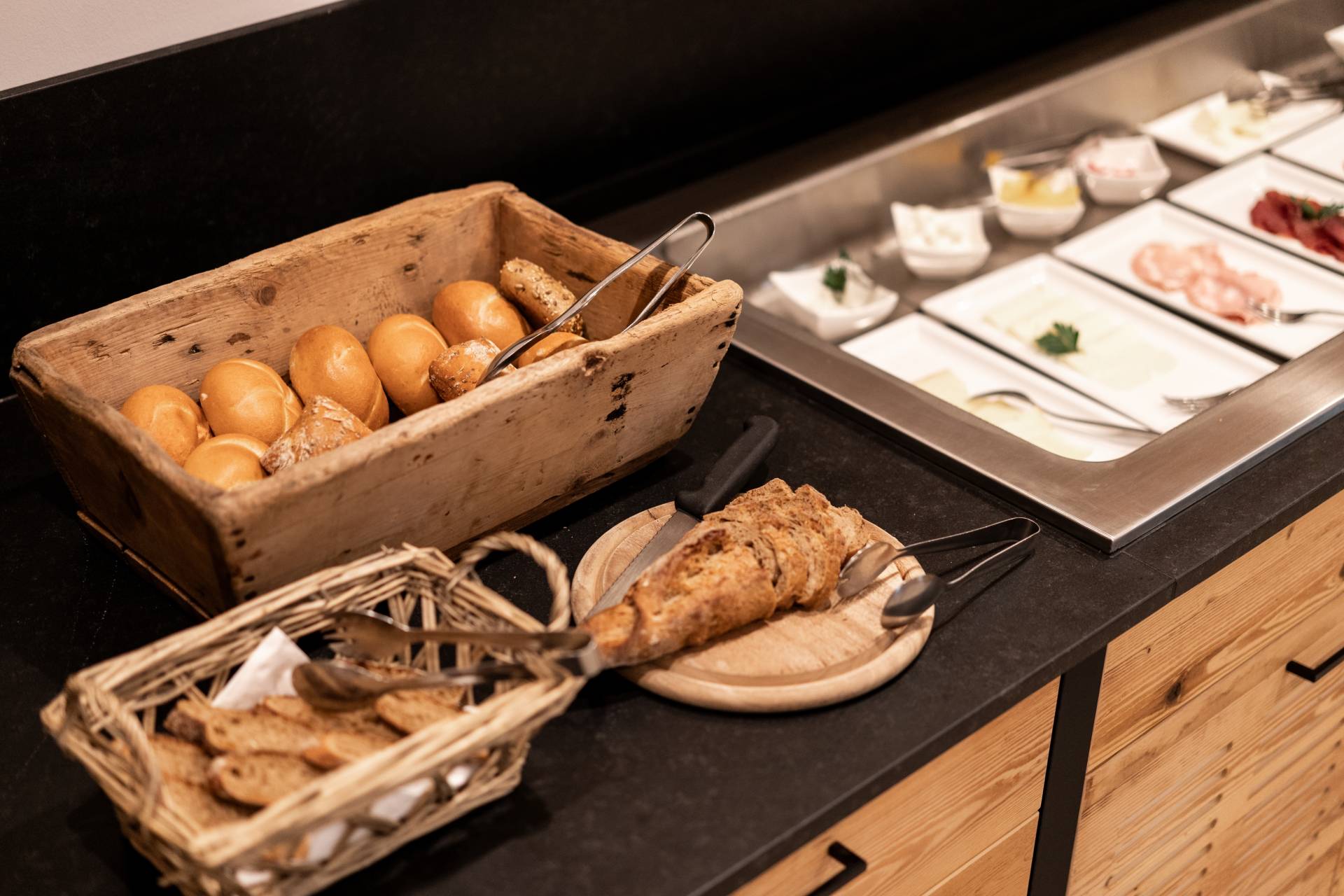Kahnwirt has a long history…
... and it was first referred to in documents in the year 1360 as Chanhof, but it is probably much older. Its origin probably reaches back to the time of the first church building in St. Martin, with which it must have formed a unit. The origin of the Kahn family name, on the other hand, is still in the dark.
A genealogical notice in the “Osttiroler Bote” reads: “After the victory of King Otto I over the Hungarians in the Battle of Lechfeld on August 10, 955, a Mongol prince was pardoned and settled in the Freising territory. The name Chan (=Mongol prince) appears frequently in the Toblach parish, which was known to be under Freising rule until 1141.” It might therefore be the case that the Kahn name dates back to this (Hungarian) Mongol prince. This statement from historian Hans Fink, however, will be more accurate; he writes: “The Kahn name may come from St. Candidus, the patron saint of Innichen Abbey. Previously, Candidus was a popular baptismal name; the Innichen Abbey is also referred to in documents as St. Kannen or Cannen.”
Over time, the spelling of the name has undergone various changes. In 1425, our name was written “Chan”; in 1580, “Khan”; then in 1616, “Kaan”; in 1620, “Khan” again; and since about 1800, it has had its current form, “Kahn.” A complete family tree in the hallway of Kahnwirt shows the line from the first Chan to the current host, Josef Kahn. It is very rare and perhaps even unique in history that a family has been in the sacristan service for more than 600 years like the Kahn family from St. Martin/Gsies. In the Widum of St. Martin, there is a document from April 24, 1425, from which it emerges that, even then, the Kahns had been performing the sacristan service at the church in St. Martin “from time immemorial.” For these exceptional ecclesiastical accomplishments, Josef Kahn was awarded the “Pro Ecclesia et Pontifice” papal medal of merit by Pope Pius XI in 1925.
But Kassian was not yet finished. Just five years later, in 1976, the second renovation was carried out. The old roof structure was replaced with a new one, and 6 guest rooms were built. The modernizations made the inn an increasingly popular place for travelers and a firm part of the village community.
Rita brought her own magic to the inn. With her excellent cooking skills and her sense of hospitality, she managed to give the restaurant an excellent reputation. She created delicious and local dishes that delighted both the villagers and the travelers. The years passed, and the inn flourished under the leadership of Josef and Rita. The combination of Josef's business acumen and Rita's cooking skills made the inn a popular place in the region. Even as times changed and the village evolved, one thing remained constant: the hospitable charm of the Kahnwirt inn. It is a living symbol of Kassian Kahn's legacy and a testament to the hard work and passion of Josef and Rita.
In addition to the apartments, a welcoming breakfast room was set up. Here, guests can start their day with a delicious and nutritious breakfast while enjoying the historic atmosphere of the building. A newly designed dining room also offers the opportunity to dine at the Kahnwirt in the evening. In this room, which reflects the history and elegance of the building, guests can enjoy a relaxed dinner in a warm and inviting environment.
